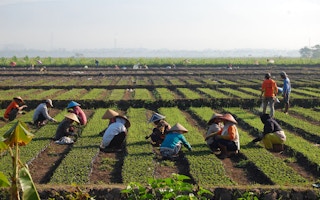Despite climate change, water scarcity and the many ills affecting the planet, this generation is living on an increasingly greener Earth.
Measurements from space show that some parts of the northern hemisphere, notably China and India, are a lot greener than they used to be, which is potentially very good news for the climate.
Growing vegetation takes up a great deal of carbon dioxide from the atmosphere, so the more that plants and trees can use, the greater the chance of slowing global warming.
The new findings appear especially positive in the light of earlier studies of global vegetation trends. Science has already found that climate change can affect the Earth’s vegetation pattern adversely.
There is also concern that the effort to grow crops to combat climate change will itself leave less space for other vegetation. And changes in Arctic vegetation are prompting concern that they could promote an increase in releases of greenhouse gases.
Up to now scientists who have already noted the appearance of global greening thought it was because plants were responding to the fact there was more carbon dioxide in the atmosphere (which is needed for photosynthesis) and so were growing faster, in a process known as the fertiliser effect.
This turns out to be only partly true, because a new study reported in the online community Nature Research Sustainability has shown that it is more intensive agriculture and the use of much more artificial farm fertilisers that is one of the main contributors to greening.
This is causing its own environmental damage by polluting watercourses and damaging biodiversity.
But despite these reservations there is much good news in the latest research. Since the turn of the century China has shown a remarkable growth in its green areas because of the planting of new forests and the intensification of agriculture. Although the country contains only 6.6 per cent of the global vegetated area, it alone accounts for 25 per cent of the net increase in leaf area of the planet in that time.
Of this, 42 per cent of the increase in green areas was from newly planted forest and 32 per cent from croplands. The forests are designed to hold back the deserts, cut air pollution and reduce climate change.
Food production leaps
The 32 per cent rise of greening in croplands was caused by intense agriculture, more irrigation with multiple cropping, and heavy fertiliser use, often causing damage to the local environment.
In India, also far greener than in 2000, larger forests account for only a 4.4 per cent increase in greening, while 82 per cent comes from croplands. In both countries food production has increased 35 per cent in the same period as both governments have sought to feed their people.
The European Union also has experienced considerable greening over the same period, third behind China and India in the global league table. In this case 55 per cent was due to increased cropland and 34 per cent to more forests.
Sadly, despite the increased uptake of carbon dioxide from the atmosphere in the northern hemisphere, the greening this represents did not make up for the loss of leaf area in tropical forests.
Brazil, the Democratic Republic of the Congo and Indonesia continued destroying their forests, and in doing so more than made up for the gains elsewhere, apart from the damage this did to ecosystems and biodiversity, the scientists note.
Brazil leads browners
They compiled a league table of greening and the reverse – browning – where satellites show countries have degraded or abandoned land and so reduced the vegetation cover.
Brazil, which has more green land than any other country on the planet, came top of the browning table, having degraded 11.6 per cent of its green land since 2000. Indonesia came second in the browning table with 6.8 per cent, Argentina a close third with 6.7 per cent, and Canada fourth with 5.7 per cent.
This does not tell the whole story, because while some land became browner other patches became greener, so in nearly all countries the browning was balanced out by greening. Altogether the Earth became a lot greener in this period, particularly in the northern hemisphere.
The Nature study concludes that a third of the vegetated land on Earth is becoming greener, in other words more productive, but this is not simply the effect of more carbon dioxide in the atmosphere.
Most of the greening is down to more intensive agricultural practices, as in China and India, and more planting of forests. This, rather than the fertiliser effect, is responsible for at least a third or probably more of the greening of the Earth this century.
This story was published with permission from Climate News Network.










